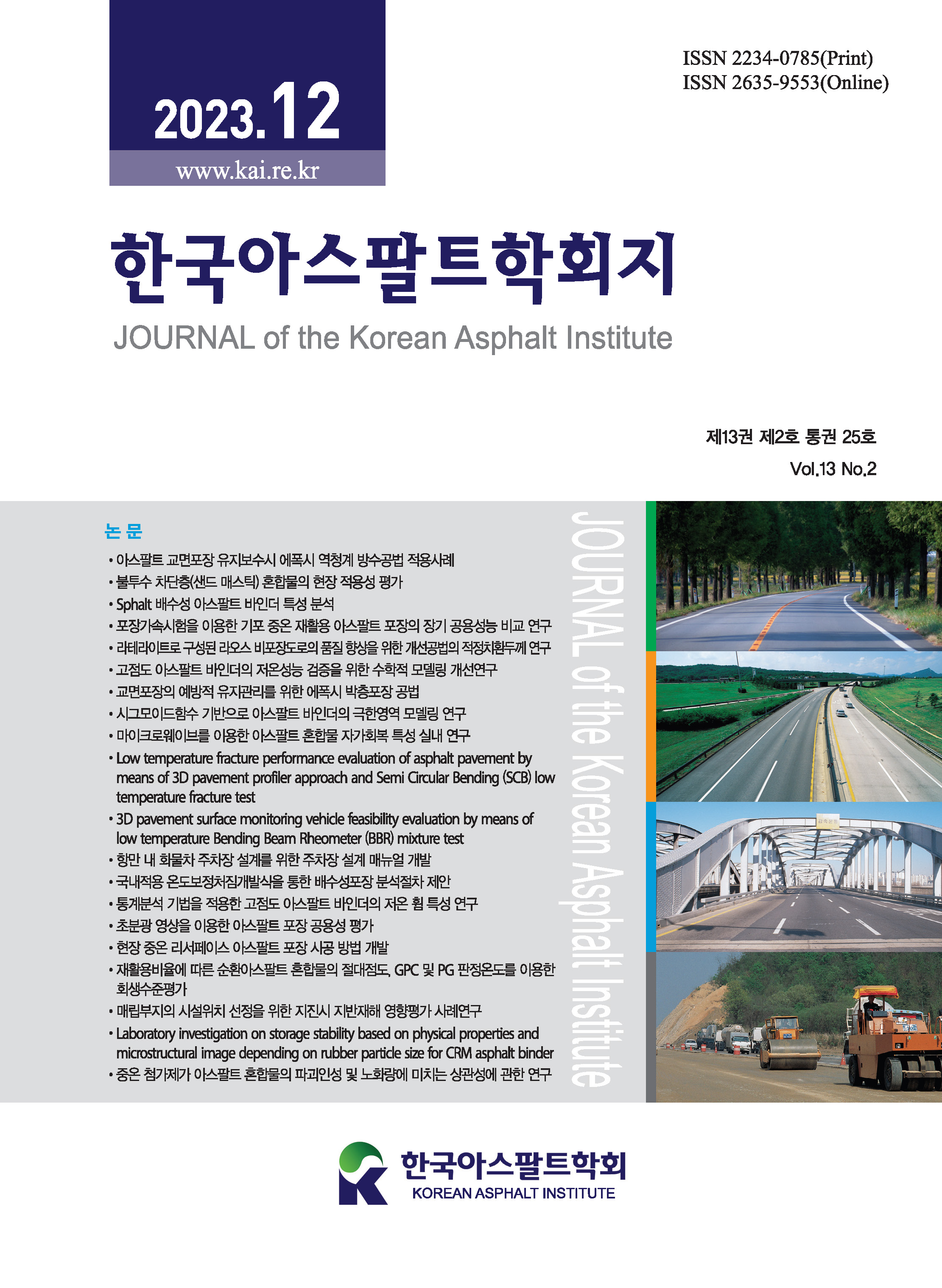Scientific Paper
Abstract
References
Information
- Publisher :KOREAN ASPHALT INSTITUTE
- Publisher(Ko) :한국아스팔트학회
- Journal Title :Journal of the Korean Asphalt Institute
- Journal Title(Ko) :한국아스팔트학회지
- Volume : 9
- No :2
- Pages :207-233
- Received Date : 2019-12-13
- Revised Date : 2019-12-26
- Accepted Date : 2019-12-27
- DOI :https://doi.org/10.22702/jkai.2019.9.2.014




 Journal of the Korean Asphalt Institute
Journal of the Korean Asphalt Institute






